Ergonomic Keyboard Layouts
There are a lot of keyboard layouts today. There's standard QWERTY, and there's the more efficient Dvorak. But a lot people are making a lot layouts still. Some are specialized on a particular language (e.g. German, Spanish), some aim for easier transition from QWERTY, some are designed for programers. This page is a list of them.
Keyboard Layout Heatmap
- Layouts:
- European Layouts:
- Non-Latin Layouts:
- Character Frequency:
Bigger circle means more frequently used.
QWERTY (1870)
The good old QWERTY, familiar to everyone. The QWERTY layout came from typewriters, around 1870s. See Keyboard Design Flaws.
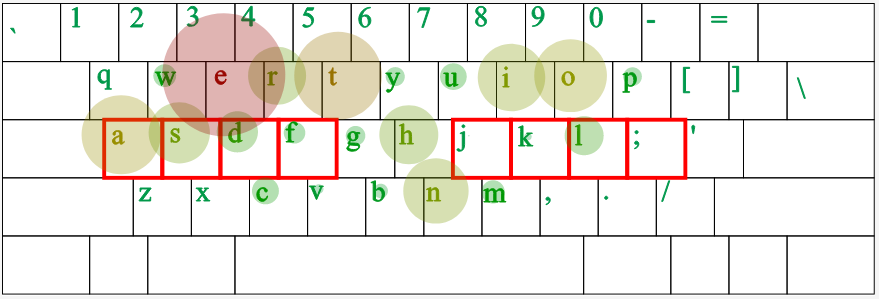
Dvorak (1936)
The Dvorak layout, the first layout designed for efficiency, in year 1936.
Microsoft Windows bundled Dvorak in year 1995. Mac did in Mac OS 8 in year 1998.
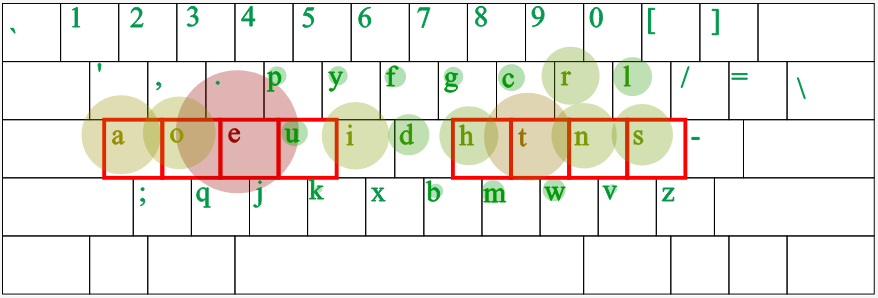
Maltron Layout (1977)
Programer's Dvorak (1997)
Arensito (2001)
The Arensito Keyboard Layout, by Håkon Hallingstad, year 2001.
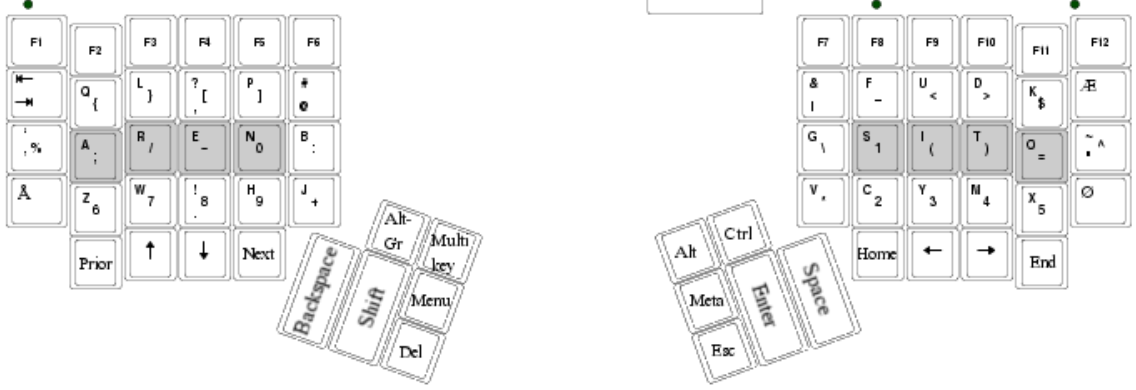
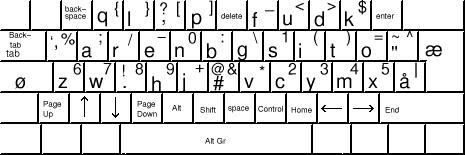
Major points according to the author:
- 8 most used characters in home row.
- Minimizes repeated same finger.
- Optimize bigrams and trigrams.
- Minimizes use of pinkies.
Capewell (2005)
The Capewell layout is designed using a evolutionary algorithm to evolve the best possible layout. Capewell is designed by Michael Capewell. Released ~2005.
Capwell is very confusing. On their site they have several versions, and the site changes over the years, without clear indication of version and name.
Colemak (2005)
Colemak layout is the second most popular ergonomic layout after Dvorak Keyboard Layout.
Colemak layout popularized keyboard layout design craze, since 2005.
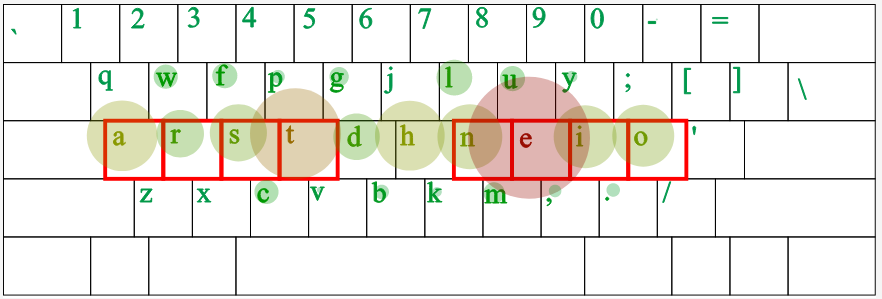
Colemak DH (2014)
Colemak DH appeared in 2014. It is a improvement on Colemak, fixing the problem of right hand index finger moving too much to the center to press H.
- home page https://colemakmods.github.io/mod-dh/
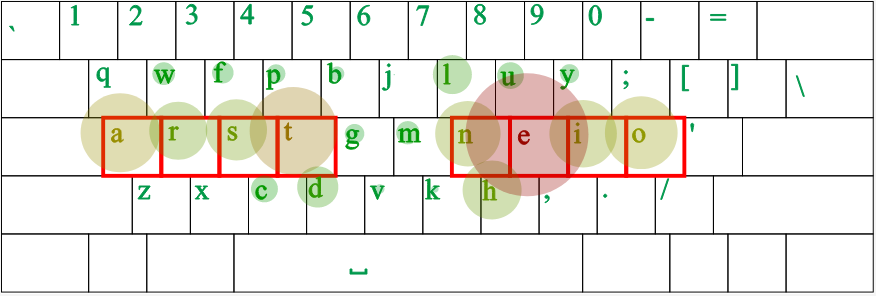
Asset (2006)
Asset layout is designed for easy transition from QWERTY. Designed by David Piepgrass in 2006.
15 keys are different from QWERTY.
- home page http://millikeys.sourceforge.net/asset/
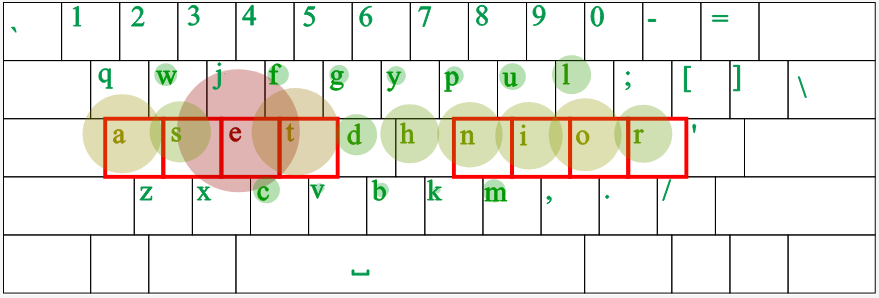
Workman (2010)
Workman layout began the idea that lateral movement for index finger is bad. (that is, index finger should not move to the middle much.) It is inspired by this problem from Colemak Layout (2005)
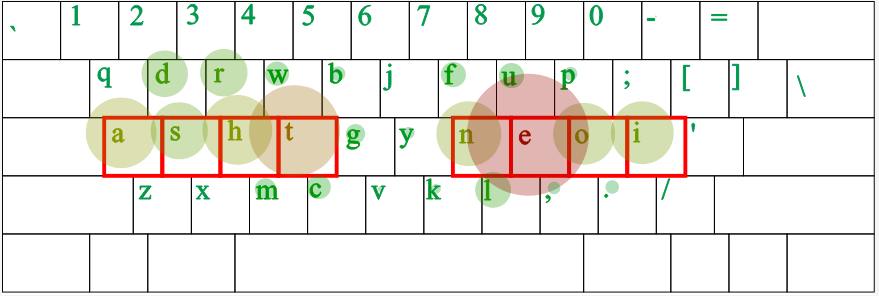
QFMLWY (2011)
Carpalx is website that studies efficiency of keyboard layouts. The site began in 2007. By its algorithm, it comes up with the Carpalx QFMLWY layout, presumed to be the most efficient, according to how he calculates the score.
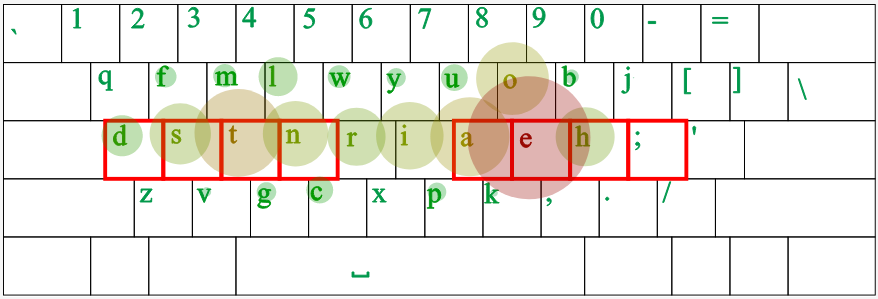
Minimak (2012)
Minimak layout is created by Ted Lilley around 2012. Minimak is designed to be fastest to learn for QWERTY touch-typers. It only changes 4 keys, so that 2 of the most frequently used letters in English (e → 13%, t → 9%) are now on the home row, typed by the strong middle fingers. Minimak has other versions, with 8 keys change, then 12 keys change. The idea is that one can progressively adopt more efficient layout.
- home page http://www.minimak.org/
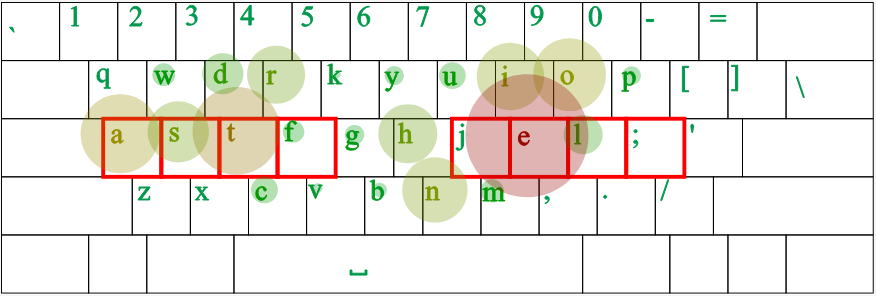
Norman Layout (2013)
Norman layout is created by David Norman, published in 2013. It has a well designed homepage.
- home page http://normanlayout.info/about
Norman layout is similar to Asset Layout. Norman layout is the result of study of all existing layouts. Its main claim is that it “keeps 22/26 letters in the normal use pattern of their QWERTY finger”, and claims to be just as efficient as Dvorak, Colemak, Workman, etc.
In Norman layout, 15 keys are different from QWERTY.
Also, Norman layout, like many others, has a critical misconception, believing that the { X C V } keys are optimal for cut copy paste. In fact, these shortcuts get you Repetitive Strain Injury. 〔see Why ZXCV Undo Cut Copy Paste Keys Are Bad?〕
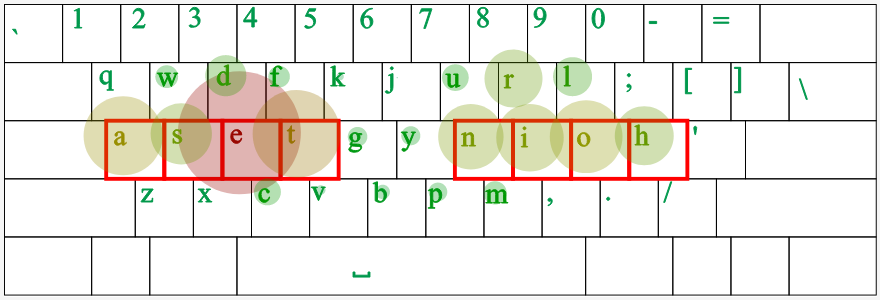
qwpr (2013)
qwpr is designed by Jameson Quinn. It appeared in 2013.
qwpr changes just 11 keys from QWERTY, and lets you type many European language characters and Unicode symbols.
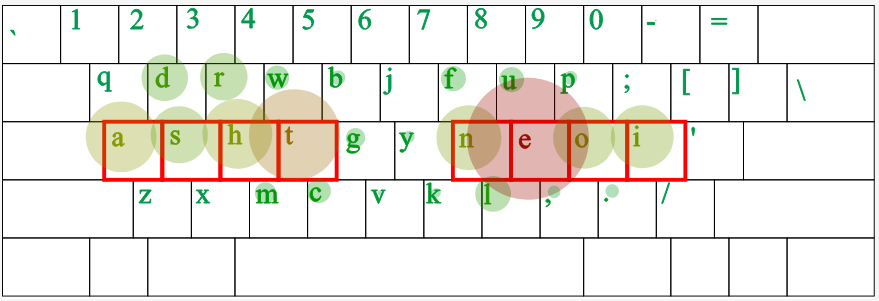
Halmak (2016)
Halmak layout is designed by Nikolay Nemshilov, year 2016. It's created by using an evolution algorithm.
- home page https://github.com/kaievns/halmak
their site claims:
- Build based on the real world hand movements analysis
- Nearly maximal possible typing efficiency
- Very low overall fingers movement distance
- Very low same finger / same hand usage overheads
- Very low overall horizontal hands movement
- Highly symmetrical design that accounts for individual fingers strength
- Designed with the modern, web based English in mind
These claims are not particularly meaningful. Every layout design since 2010 would claim the same.
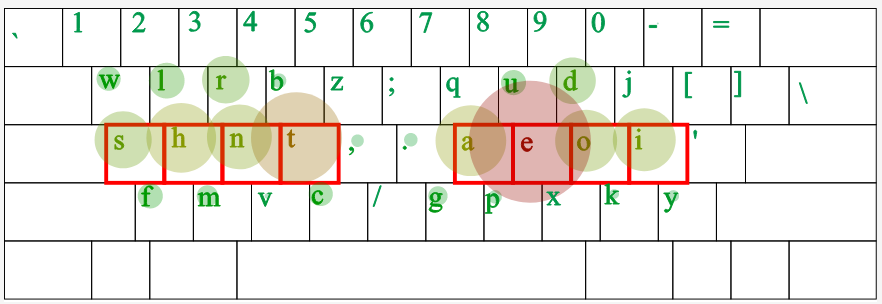
Beakl Layout (2016)
Beakl Layout began the idea that pinky keys should be avoided, even on the homerow.
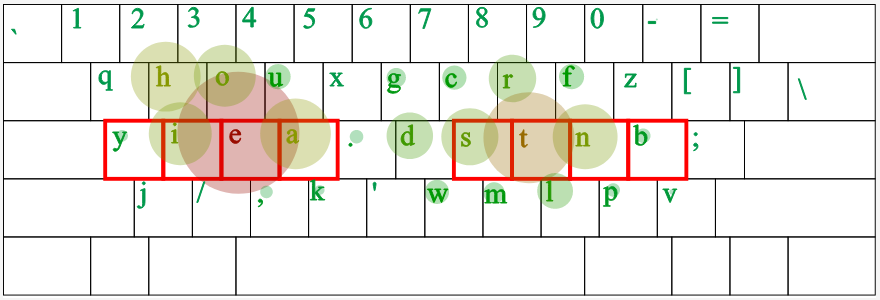
Engram (2021)
Engram Layout is new around 2021-03, designed by Arno Klein. The layout is designed based ergonomic science, for typing English language, using Google's ngram (bigram, trigram) text data as part of the design basis.
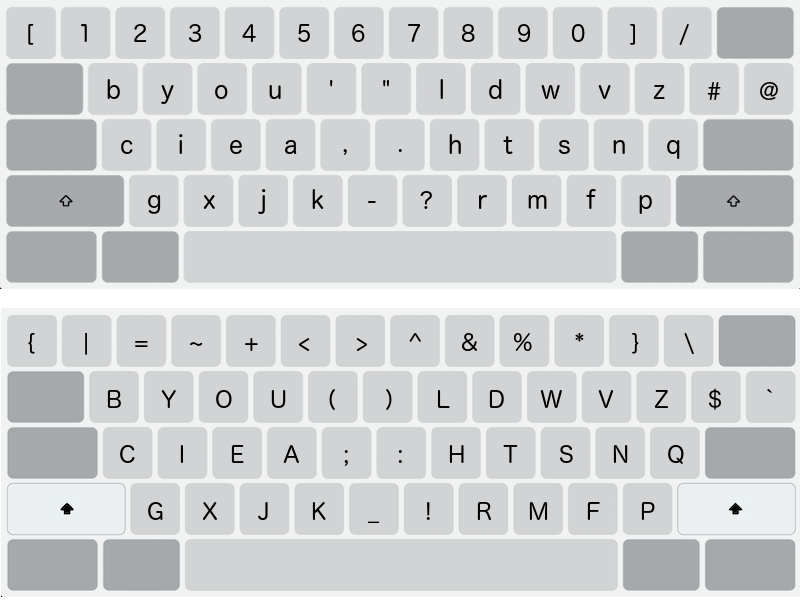
Note that in engram layout, positions are optimized not just for letters, but also for numbers, symbols, and all punctuations, including the shifted character. For example, traditionally, shifted 2 is @, but on engram it is =.
Most other ergo layouts do not make such a change, except Programer's Dvorak. However, in Programer's Dvorak, they also optimized position for numbers, but engram does not.
Engrammer (Engram with Traditional Shift) (2023)
Engrammer layout is Engram with traditional shift. there are two advantage of this. (1) More compatibility when using traditional keyboards. (2) Avoid the problem of shortcuts that involve punctuations stop working, example: Ctrl+= or Ctrl++
Engrammer layout is created by Suraj N. Kurapati, on ~2023.
- home page https://github.com/sunaku/engrammer
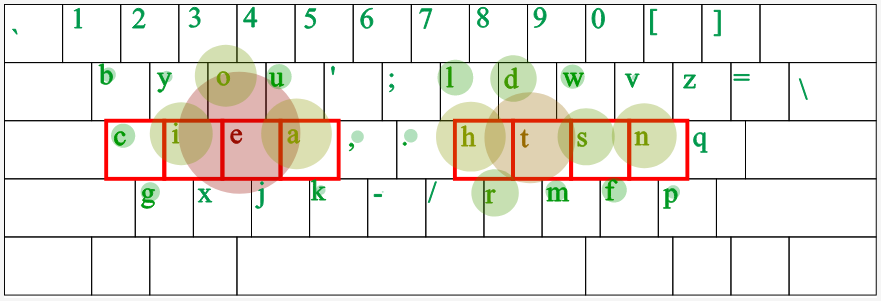
Canary Layout (2022)
Designed by the keyboard layout community. It emphasize finger rolling motion, e.g. like typing asdf in QWERTY.
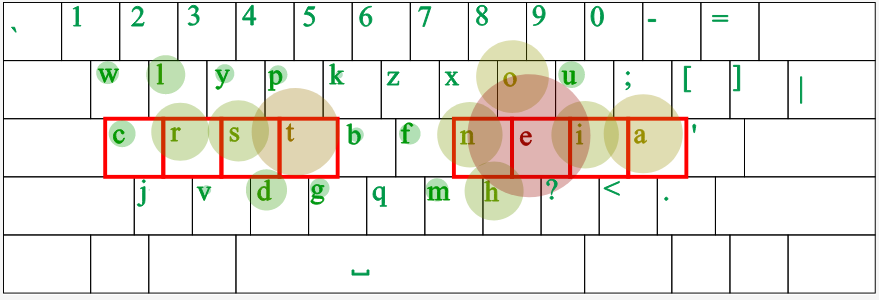
More Layouts
- mtgap
- Hands Down Layout (2020)
- collection of newer niche layouts since about 2015 https://cyanophage.github.io/
- most in-depth look at keyboard letter layout design. https://bit.ly/keyboard-layouts-doc
Ineffectualness of Nerds on letter layouts
The keyboard letter layout guys, are mostly ineffectual nerds.
each's story is pretty much like this:
I tried A B C D E F G but they all have problems. Therefore, here is my new layout H, and it's the best of them all.
Innovations in Keyboard Letter Layout Design
some of them, are actual innovations.
- Dvorak → introduced the idea of minimize finger movement distance and alternating hands concept.
- Maltron → introduced putting the most frequently used letter e on a thumb key.
- Colemak → introduced the idea of finger rolling and popularize the idea dvorak is not the king.
- Carpalx (QFMLWY) → introduced the idea of scoring metric for designing a layout.
- Workman → introduced the idea of avoiding lateral movement for index finger.
- Beakl → introduced the idea of avoiding pinky, even on homerow.
Keeping Z X C V is Inefficient
Many layouts keep the {Z, X, C, V} keys in the same position as QWERTY, so that the {undo, cut, copy, paste} keys don't change. This is bad. This induces Repetitive Strain Injury. See: Why ZXCV Undo Cut Copy Paste Keys Are Bad?.
Thumb Keyboard Layouts
These are layouts designed for physical keyboard that have 4 or more thumb keys.
One-handed Dvorak Layouts
There are also a Dvorak layout for single left hand, and one for single right hand. see Dvorak keyboard layout
Ergonomic Layouts for Other Language
There are many ergonomic layouts for other languages.
- German Ergonomic Keyboard Layouts: de-ergo, ADNW
- French Ergonomic Layouts: dvorak-fr, bvofrak
- Portuguese Ergonomic Keyboard Layout: pt-Nativo
there is also Turkish-F layout, which is ergonomic.
What is the Most Efficient Keyboard Layout?
A Ergonomic Layout Standard for All Languages
Another common problem is for non-English languages. For example, German, Spanish, French, and even Chinese and Japanese can benefit because many of their input methods use English alphabet.
〔see Pinyin Letter Frequency 拼音字母頻率〕
In these languages, usually there are few extra characters such as é that need to be typed. There are many standardized layouts for them (e.g. QWERTZ, AZERTY), but often they still requires you to type the special chars by a combination of key press using AltGraph or Compose key, and these layout usually do not consider ergonomics of letter frequency.
xah talk show, on keyboard layouts

Acknowledgement
Thanks to the following people who have made useful comments.
- Scott L Burson told me about Asset layout. [see http://groups.google.com/group/comp.lang.lisp/browse_frm/thread/cef5fad77897af39 ]
- Hugues [see http://huguesaujapon.blogspot.com/ ] told me about Bépo layout. 〔see French Ergonomic Layouts: dvorak-fr, bvofrak〕
- Elena (egarr…@gmail.com) corrected a error in my Progrmmer's Dvorak layout.
- Xavier Gomes Pinho told me about pt-native layout. 〔see Portuguese Ergonomic Keyboard Layout: pt-Nativo〕
- Roland Kaufmann 〔http://www.kaufmann.no/〕 made informative comment on the programer Dvorak layout and also about Dvorak on Linux.
- Hugues Dumez mentioned the bvofrak for French.
Keyboard layout design
- Keyboard Layout Design 🔠
-
Ergonomic keyboard Layouts
-
Thumb Keyboard Layouts
- Most Efficient Layout?
- QWERTY Layout
- Dvorak Layout
- Maltron vs Dvorak
- Colemak Layout (2005)
- Workman Layout (2010)
Layout Efficiency
International Layouts
Western Layouts
- Idiocy of International Keyboard Layouts
- UK Keyboard Layout
- German Keyboard Layouts
- French Keyboard Layouts
- Spanish Keyboard Layouts
- Portuguese Ergonomic Keyboard Layout: pt-Nativo